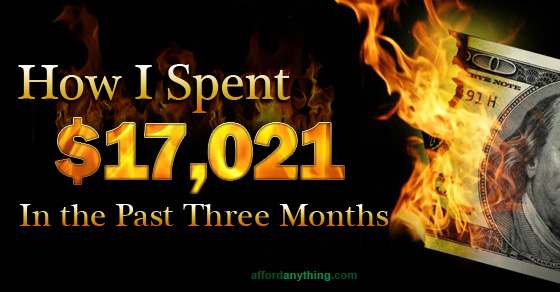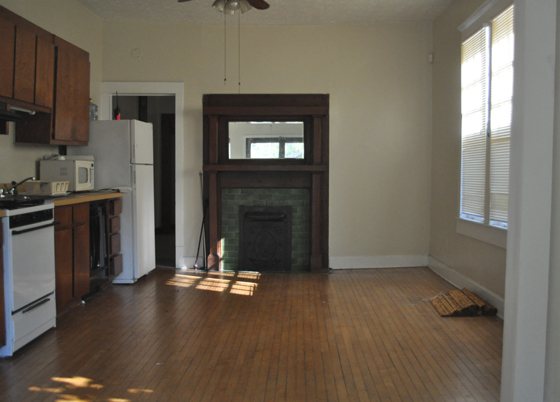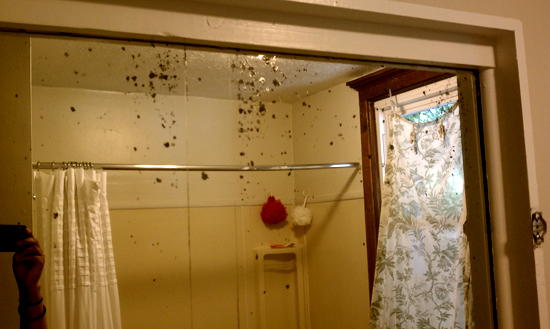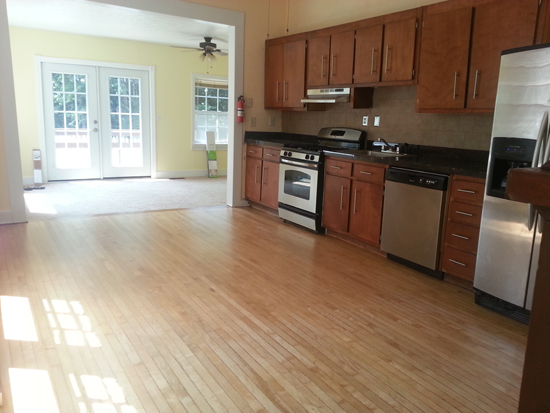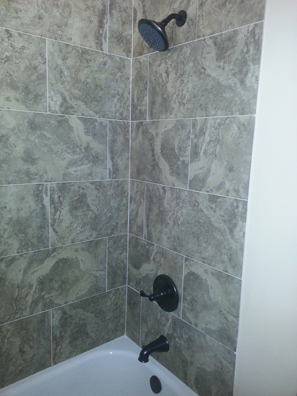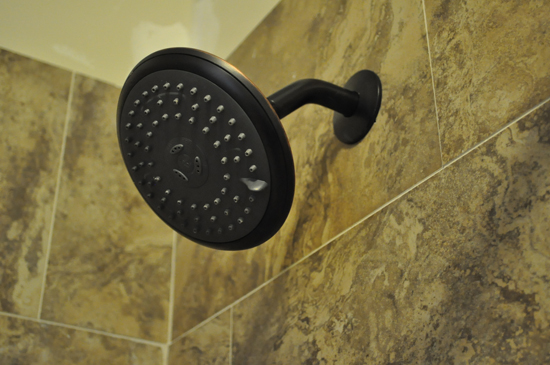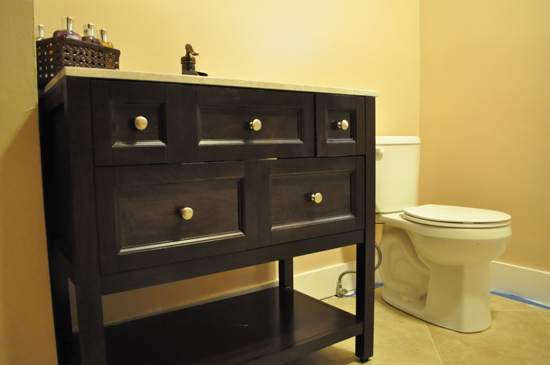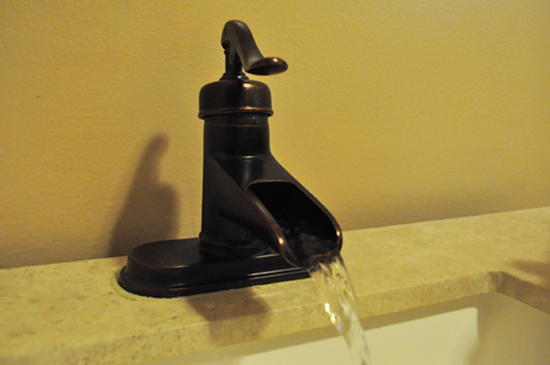You know that sinking feeling in the pit of your stomach, when you decide to remodel your kitchen …
… and you think it’ll cost $5,000 ….
… and it ends up costing triple your estimate?
Yeah.
Last June, I decided to remodel one of my rental apartments. My tenants were renting the apartment for $750 per month, but it was an ugly space: yellowing 1970’s countertops, pink-and-brown bath tile, and a refrigerator that blocked the bedroom door.
I decided to upgrade the unit: stainless steel appliances, granite countertops, a new bathroom. (In hindsight, I should have realized that a $5,000 ballpark was far too low.)
I underestimated the extent of the repairs needed. The floor joists were rotten; the plumbing was ancient. The scope of work ballooned, which created four types of costs:
- Labor Costs
- Material Costs
- Permit & Inspection Costs
- Vacancy/Lost Income Cost
How did these costs pile up? Find out below …
Before
But first, check out the “Before” photos.
Here’s how the costs broke down. All items include labor + materials unless otherwise indicated.
Paint – $885
Carpet – $390
Appliances – $940
Cabinet Hardware – $200
Contractors – $6,728 (mostly labor, plus minor reimbursable expenses. Includes about $400 for renting a dumpster.)
Permits – $525
Granite – $910
Tile – $126
Home Depot and Lowe’s – $4,840
Windows – $802
Vacancy – $675
Total: $17,021
… triple the amount that I originally predicted! Yikes! Good thing I’d been stockpiling cash for months leading up to this project. Whew!
One huge caveat:
This figure doesn’t account for the value of my time. My “sweat equity” includes:
- Installing the countertop, cabinet hardware, closet doors and ceiling fans
- Managing the project (defining a scope of work, selecting contractors, overseeing progress)
- Driving all over town for wholesale materials and scratch-and-dent appliances
- Advertising the property, taking photos, answering tenant emails
- Bookkeeping and controlling costs
- Due diligence on the tenant applicants, including checking credit scores, changing the house keys, submitting disclosures and performing a move-in inspection.
Total Time Spent: ????
Monetary Value of that Time: ????
Ideally, I should be tracking the time I spend on these projects. I’m not.
I’m documenting my tasks so that I’ll have a “checklist” when I renovate the next unit. I’m developing procedures and processes … hooray! But that comes at the expense of tracking my time. I ought to do both. But my limited mental bandwidth can only handle so much.
At any rate, suffice to say that remodeling an apartment (or any property) is a lot of work upfront, for the benefit of getting steady payments in the future. Real estate investing creates a stream of passive income after you repair and maintain the space, hire a property manager, and automate your systems.
Anyway, Oscar Wilde said “a cynic is a man who knows the price of everything but the value of nothing.” So let’s turn our attention away from the costs, and onto the profit …
Dude, I Priced It Too Low!
Before I tell you the price, check out these “After” pictures …
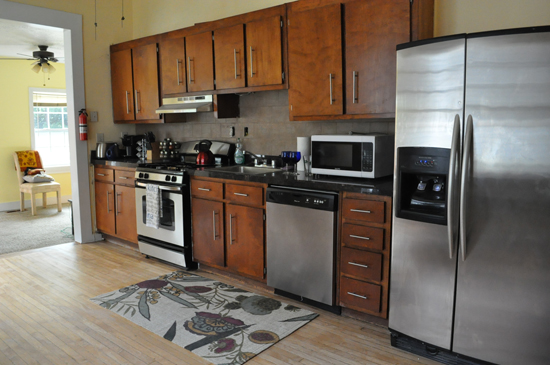
Stainless steel appliances match the sleek new cabinet hardware. Granite countertop meets neutral-toned tile backsplash.
Pretty rockin’, huh? (If I do say so myself!)
I didn’t know how to price the unit. I searched Craigslist ads for similar units, but given the location and quality, a comparable unit was tough to find.
So I listed it for $1,050 a month, figuring I’d wait a few days to see if there’s any interest at that price point.
WHOA DUDE! Within one hour, my Inbox was so jam-packed with responses that I had to take down the ad. One of those respondents called to ask if he could see it within the next twenty minutes.
The unit was still filled with tools, ladders, sawdust, etc., so I told him it’s not ready for a showing. He asked to see it anyway. I relented. He plunked down a deposit that same day.
Total time the unit sat on the market: less than 4 hours. That’s unreal!
(I also have several respondents “on backup” who say they’re ready to move in if the current tenant moves out. One woman even submitted a rental application, paying the $35 application fee, so she could be first in line.)
I’ve never seen that kind of interest, ever. It took me almost three months to find a tenant for House #2. The lesson? I priced that unit waaayyyy too low. 🙂
Update 2013: I raised the rent by an extra $100, so that the space now rents for $1,150 in total. It still filled within a day or two of posting it on Craigslist (which makes me think that I’m still pricing it too low.)
Update 2015: I raised the rent by another $300, plus a $40 per month pet fee, so it rents for $1,490 in total. To avoid pricing it too low, I started advertising the rent at a rate that I suspected would be far too high — $1,750 — and gradually decreased the price until it reached the point where I’m getting an average of 5-10 inquiries from tenant prospects per day. We knew we found support at the $1,450 price point because that’s when the phone calls and emails from prospects started flooding in, rather than trickling in.
How Good of a Deal Was It?
I spent $17,021 and increased the rent by $300. That means the renovations will require 57 months (almost 5 years) to pay itself off.
Assuming the renovations will last for 8 years before they need to be re-done, the final 3 years of increased rent will be profit. That’s $300 x 36 months = $10,800 in profit on a $17,021 investment. (This is quoted in today’s dollars. I’m assuming rent rises at the same pace as inflation). This is the worst case scenario.
On the other hand …
If I raise the rent by another $100 a month after next year, the renovations will only require 34 months to pay itself off, which is about 3 years. ($17,021-($300 x 12 months)) / $400 = 33.5 months
This would mean that the last 5 years would be profit. That’s $400 * 60 = $24,000 in profit on a $17,021 investment. After subtracting for vacancies and the added expenses of offering a “luxury” rental (higher maintenance standards, better lawn care, etc.), I’ll double the initial investment in 8 years. That’s the equivalent of making a 9 percent return in the stock market.
Update 2015: So … I’ve doubled the rent. In 2010, this space rented for $750 per month. In 2015, it rents for $1,490 per month.
This is partly due to massive home improvements. I wrote this blog post in 2012, after putting $17,000 into the unit. Between 2013 – 2015, I put another $5,000 into upgrading the windows, building a new deck, and creating a new flagstone walkway for this rental unit. I also put an additional $15,000 into general exterior maintenance (for the whole building), which we can average into $5,000 per unit. We installed new landscaping, gutters, fence, security lights and more.
In short, I’ve made about $30,000 in improvements to this unit in the past three years. (I’ve invested around $160,000 into improvements into the building as a whole — about $110,000 into Unit #1, $30,000 into Unit #2, and $20,000 into Unit #3 — over the past five years).
That said, however, not all of the rental increase can be attributed to improvements alone. Housing prices have doubled in the past five years; rental prices should logically mirror that.
If homebuyers are paying double, it makes sense that renters would pay the same, as well. The Cap Rate — which is measured based on current market value — stays the same.
Conclusion? It’s a solid investment with solid returns. Renovations are a serious job, but once they’re done, you can kick back and enjoy a steady stream of passive income for years to come. Work hard today so you can relax later.
The apartment now takes minimal time and energy. The tenants get the joy of living in a beautiful, upgraded space at a price that’s reasonable for this neighborhood. That’s an incredible win-win.
